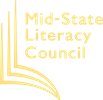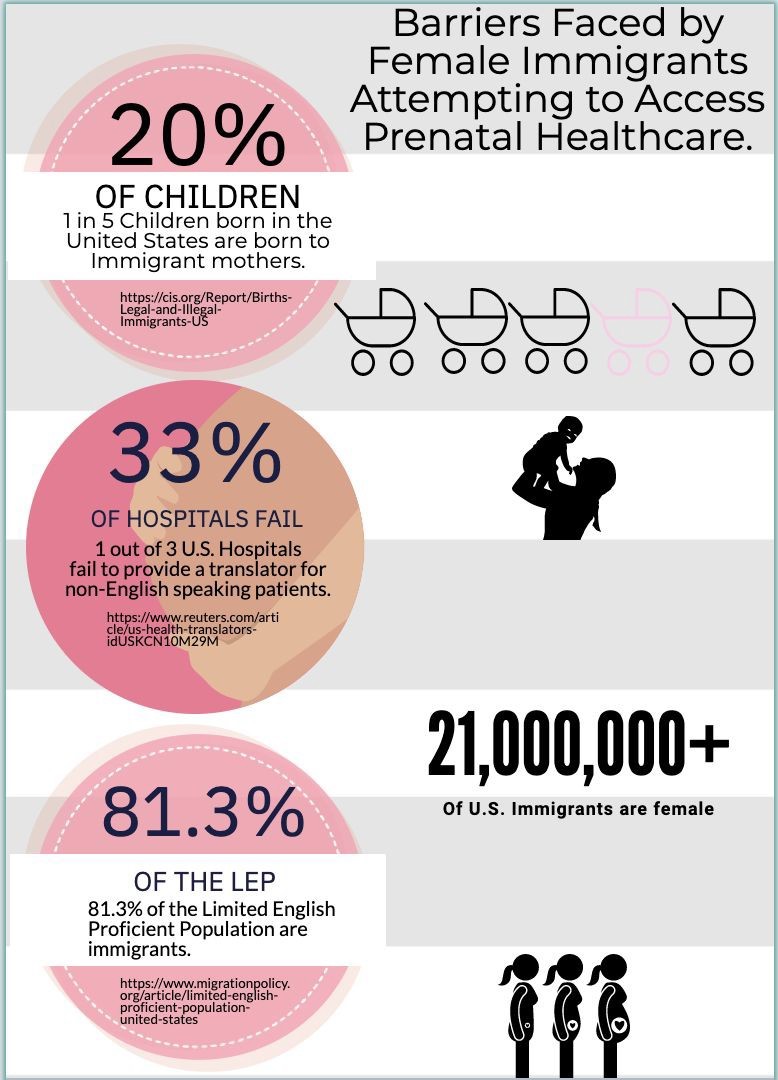Each year more immigrants enter into the United States. In 2017, 44,525,855 immigrants resided in the United States. 21,000,000+ of these migrants were female. With this extensive amount of immigrants living in the U.S., a broad range of translative technology should be available. This advancement would mark an important step in many categories, especially in regards to healthcare. Evidence suggests that language barriers faced by immigrant women make receiving healthcare during labor and delivery more difficult and dangerous than it is for women who speak the native language.
Hospitals in the United States are required by federal law to provide translators for
non-English speaking patients. However, only 1 out of every 3 hospitals actually abides by this federal rule. This results in many immigrants with language barriers, specifically pregnant women, encountering a more difficult time understanding or receiving medical guidance throughout labor and delivery.
In a survey conducted by the Centre for the Study of Mother’s and Children’s Health, on the satisfaction rate of mothers post pregnancy, it was found that “only one in five non-English-speaking women described their pregnancy care as very good.” The language barrier met by immigrants is causing child rearing to be more painful and scary to mothers giving birth and ultimately becoming more dangerous.
The amount of immigrants with language barriers in the United States accounts for 81.3% of the limited English proficient population. With the amount of people not proficient in the English language, it highlights an even bigger importance for language resources to be made available. In hospitals, the absence of translators proves detrimental, as one in five births are to immigrant mothers. During this crucial time of labor and delivery, a language barrier should not act as a disturbance in the process. All the attention should instead focus on birthing a healthy baby and keeping the mother safe, not on trying to communicate.
In a survey on immigrant women experiences in English speaking delivery rooms, “more than half the women believed their doctors and midwives had been less than very helpful.” Language barriers create situations where patients are less than satisfied, which could lead to potentially dangerous misunderstandings and complications due to miscommunication. There is no ethical reason for mothers with language barriers to be at more of a risk during labor as compared to English speaking women. There should be an equal attentiveness to each pregnant mother regardless of native language.
The amount of immigrants living in the United States increases each year. With this increase, it becomes more of a necessity to review and revise the language resources available in society, specifically in healthcare due to the lack of access to it. In hospitals, translators are essential on labor and delivery floors, as non-English speaking mothers face more conflicts during the processes of labor and delivery. With the amount of births linked to immigrant women, there is a vital need for there to be an increase in translative technology.
By: Corinne Horne, First-Year Student at Penn State and Participant in the Public Writing Initiative



